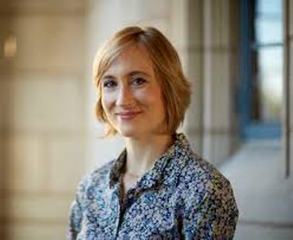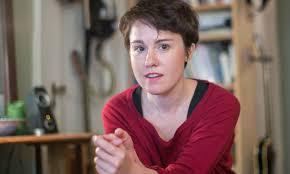|
Back
Sonic’s Final Sounds New York
Zankel Hall, Carnegie Hall
10/23/2015 -
Five World Premieres:
Michael-Thomas Foumai: The Spider Thread
Melody Eötvös: Red Dirt/Silver Rain
Hannah Lash: Concerto for Harp and Chamber Orchestra
Judah Adashi: Sestina for Voice and Orchestra
Conrad Winslow: Joint Account for Orchestra and Video
Caroline Shaw (Voice), Hannah Lash (Harp)
American Composers Orchestra, George Manahan (Music Director and Conductor)
Paul Lieber (Projections)

G. Manahan (© Richard Bowditch)
While this column was traipsing around 18th Century oratorios, 13th Century magic and a 73-year-old Italian pianist doing Chopin last week, the new young musicians of our time were fiercely pursuing their own inspirations in the great nine-day “Sonic Festival: Sounds of a New Century”.
Probably close to one-hundred new compositions, more than a hundred artists, encompassing orchestras, quartets, singers, soloists and multi-media creators took over the most unlikely spots in Manhattan and Brooklyn, offering concerts both free and for minimum fees, to give the city an eclectic share of Things to Come.
This reviewer would not have been able to process so much in so many days, but the final concert, the American Composers Orchestra, under George Manahan, gave us five works which differed as much as the origin of their composers, who came from Alaska, Hawaii, and points in between.
It was, to say the least, a heterogeneous mixture. All the composers were deft in their own ways, the languages varied from highly conservative to anarchic modern, but–rarity of rarities!–nobody went lingering on and on to fill up space. Each composer had his/her own message, gave the message and then moved on.
The first piece, The Spider Thread, by Michael-Thomas Foumai, offered a Sorcerer’s Apprentice style story in 15 minutes. Inspired by Ryṻnosuke Akutagawa’s tale about a group of prisoners trying to hoist themselves up to Paradise, he started with an upper-wind, murky picture of “Paradise”, which obviously isn’t harps and angels. The middle part, with its echoes of Sacre, was the rope-scrambling–and of a contrapuntal circus–, a vision of lightning-fast canons and fughettas, a visual portrait of “too many crooks”, animated and delightful.
Following that was Melody Eötvös’s Red Dirt/Silver Rain, which she explains is “about reconstructing memories”. In her case, the memories of her Australian childhood, an amorphous work whose orchestral colors changed, the themes transformed, and, again in an economical 12 minutes, a trip to another fantasy land.

H. Lash (© www.americancomposers.org)
Hannah Lash is not only a reputed composer but a harpist of note, and she wrote her Concerto for Harp and Chamber Orchestra (co-commissioned by Carnegie Hall with support from the Cheswatyr Foundation), in the tradition of Beethoven, Mozart and Rachmaninoff, for herself. Obviously played beautifully, with a dance-like cadenza at the end with many a new sound from one of the oldest instruments.

C. Shaw (© music.yale.edu)
My personal favorite was, I admit, because the soloist, Caroline Shaw, is an amazing composer, instrumentalist and singer. Here, her song in Judah Adashi’s Sestina, was by Clara Shuttleworth. That original poem took six words: ”You used to love me well”. The words were transferred into seven verbal equations, changing the meanings of each word, altering the original sentiment.
Ms. Shaw began with barely a pipsqueak from the orchestra into a simply-sung modal scale, repeated two or three times. Where would she go to from here? Her voice with that tremulous Björk-like gossamer-thin vibrato-less personality was mermerizing. But could it continue?
Mr. Manahan and the ACO took over with a lushly orchestrated interlude, lush like Hanson or Barber, yet oh so appropriate. When Ms. Shaw continued, it was the same scale, descending this time, ending with a cadenza on each word, with a repeat of the original six words.
A stunning performance, a work which was so highly original and so highly evocative.
Nothing was a greater contrast than Conrad Wilson’s Joint Account for Orchestra and Video (commissioned by Carnegie Hall). The video projections were subjects sometimes mundane, sometimes terrifying. A fisherman, a bird, a beating, a boxer’s face, a woman picking flowers. At first in natural light, then relit placed in montage, an equation of tenderness and violence together.
As was Mr. Wilson’s music. He writes that it was inspired by Baroque theorist Johann Mattheson, who had written a manual of “techniques on representing emotions in music.” I am certain that in his 13-minute carnival he did exactly that. Assuredly, within the seeming anarchic carnival-like beginning, he created those sentiments, used the Ye Olde 1732 Textbook to produce his effects.
And I would love to listen one day to the music with care. Amid the projections, and the ACO blaring out the deliciously loud discords, the Baroque was lost to my ears. That was my shortcoming, not the composer’s defect. To these ears, it was fun, and, like all the music, singular and frequently daring.
Harry Rolnick
|